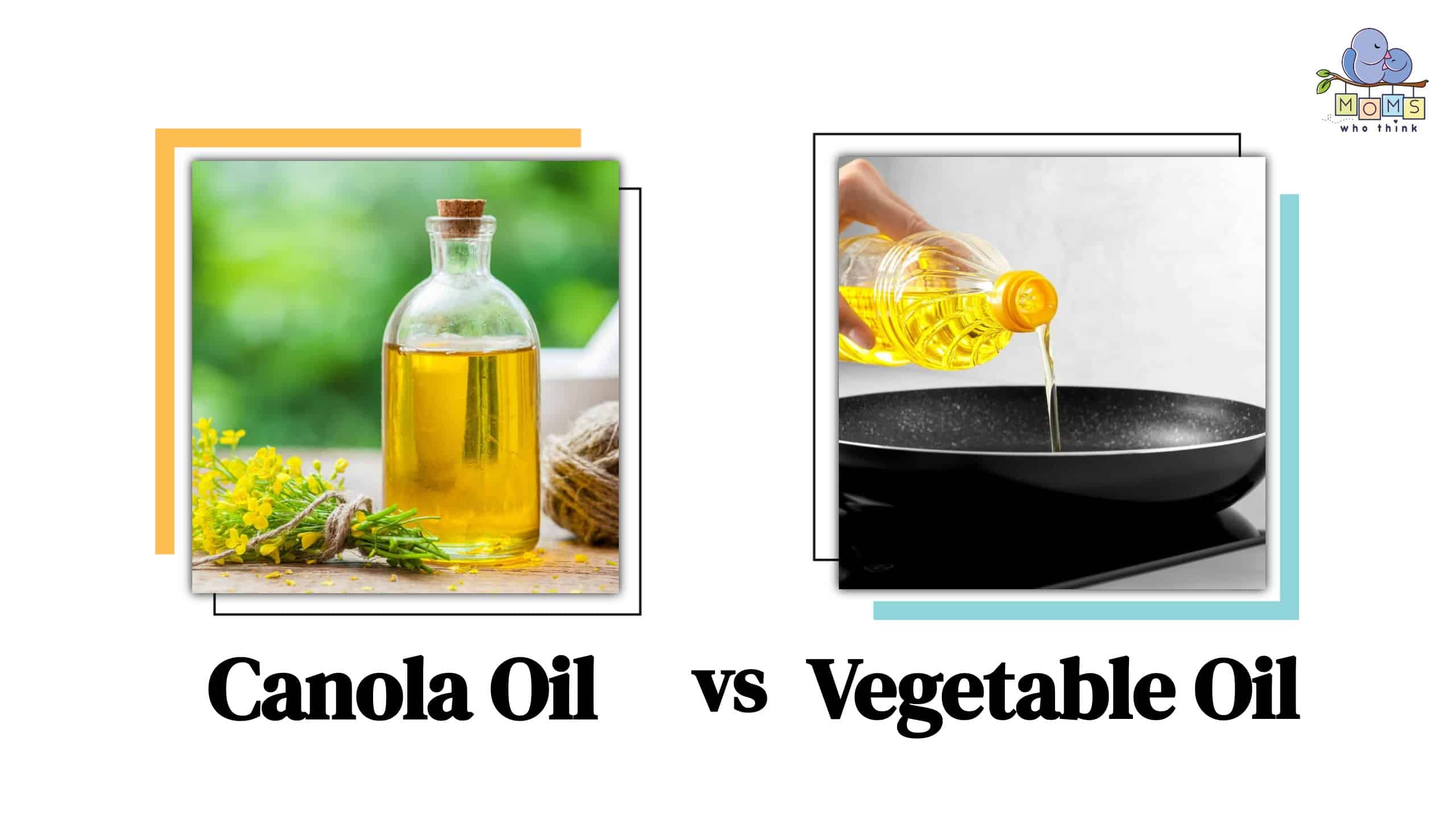Simply put, canola oil is definitely a vegetable oil but is derived specifically from the rapeseed plant. On the other hand, vegetable oil is a collection of many oils put together. This creates the difference between the two especially as far as nutrition is concerned.
In this article, we'll look at what canola and vegetable oil have in common; as well as what distinguishes them.
Canola Oil Vs Vegetable Oil: What’s the Difference?
Let’s start with canola oil: Did you know that it’s short for ‘Canadian Oil Low Acid’? Well, now you know. It was named so by Canadian scientists who conducted a series of tests on it and found it contains low acid levels compared to other oils.
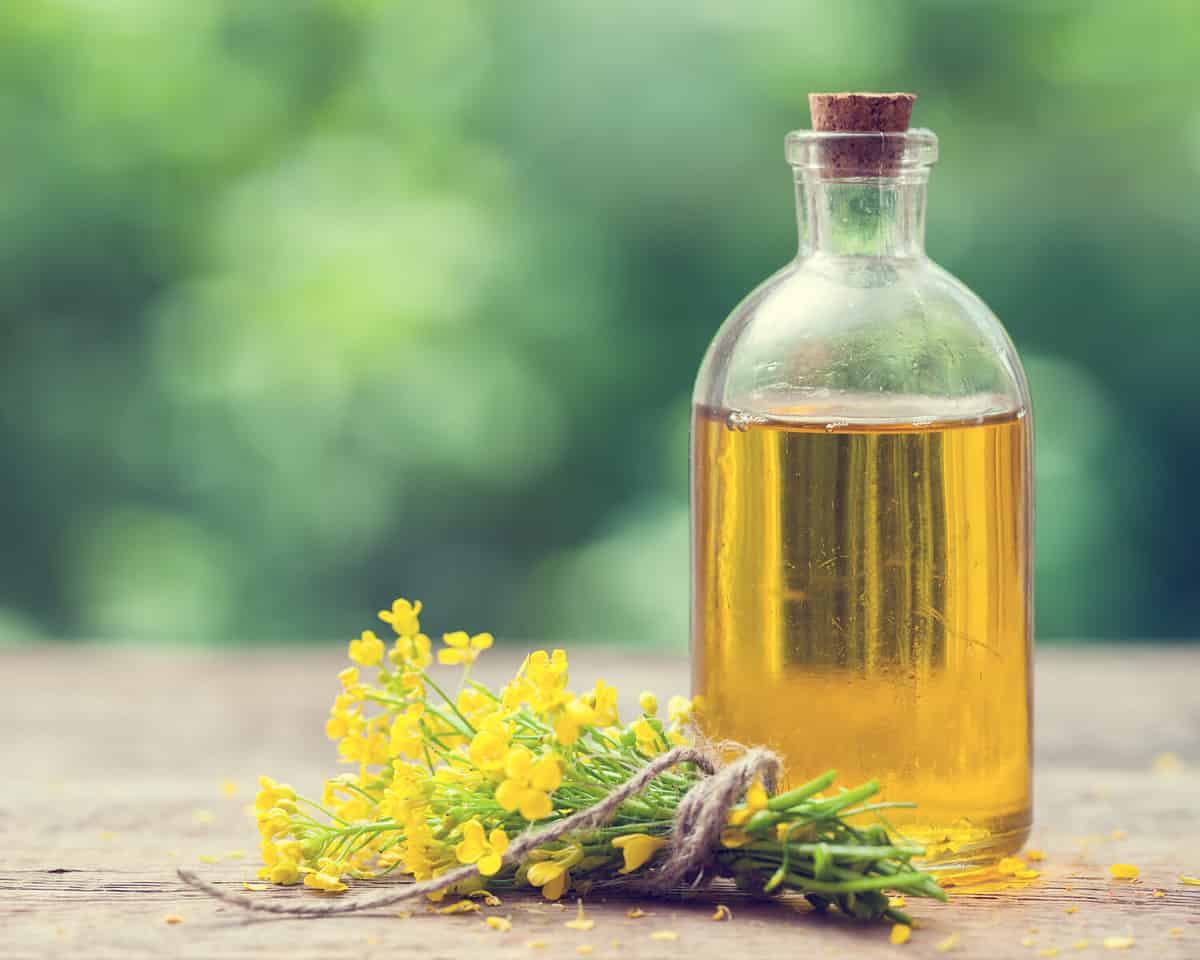
Canola oil is widely used in the preparation of various tasty meals.
©Chamille White/Shutterstock.com
The general composition of canola oil should tell you everything you’d like to know. For instance, its main ingredient is the canola plant, which only contains about 2% of the erucic acid.
Vegetable oil is basically different types of oils blended together to create just one for various cooking purposes.
What is Canola Oil?
It gets even more interesting as canola is a type of seed widely grown in Canada. This begs the question, ‘are canola and rapeseed the same?’ The answer is no. They differ in terms of acid content.
Canola is often mistaken for rapeseed because of its similar appearance. Canola seeds are rich in protein and are crushed during the manufacturing process to release high-value oil for human consumption.
Its versatility also makes it a worthwhile try in animal meals. It undergoes intense processes during manufacture to attain the ultimate look and taste of refinement.
Uses of Canola oil
One of the most popular uses of canola oil has a lot to do with cooking. Here are more cooking and non-cooking uses;

Both vegetable and canloa oils can serve as a dressing for your favorite salads.
©Marian Weyo/Shutterstock.com
- Salad dressing: Canola oil works perfectly as a salad dressing alongside honey, mustard, and lemon juice. Pick the condiments of your salad, chop them then mix them together in a bowl. Add your salad dressing and serve it on the side of your meal when ready to eat.
- Cleaning jewelry: If your pearls are on the verge of getting rusty, think of canola oil. You could go down the path of baking soda and lemon juice, but these are way too harsh. Canola oil is softer and works when sprinkled on a paper towel which is then used to wipe the pearls clean. Do this until you’re sure your pearls are nice and shiny, then rinse with water. Follow this up with mild soap and a sponge to remove the greasy feel that may be left behind. Dry your pearls up with a different paper towel and store them safely.
- Removes paint stains: Canola works even better when the paint in question is oil-based. Pour a few drops of canola oil on the affected area then follow up with baking soda. Allow the pair to sit for a few minutes along with vinegar to make the process more effective and quick. Wash off using your most trusted cleaning agents.
- Get rid of ants: Canola oil, in conjunction with borax and honey, has an interesting way of keeping your home pest free. The honey, or sugar, is supposed to act as bait which traps them then borax and canola oil poison them, ridding your house of them for good.
Health Benefits of Canola Oil
You must have heard from somewhere that canola oil is good for your heart. That is definitely one of the many health benefits you’re set to enjoy with this oil type in your kitchen. Here are more of them;
- Decreases blood pressure: We all know that high blood pressure may become fatal if not dealt with in time. Canola oil helps in managing blood pressure by lowering it when it’s a bit on the higher side.
- Improves blood sugar and cholesterol: It’s generally healthy and helps maintain your heart and keep it strong by managing cholesterol and blood sugar.
- Gets rid of stiff joints: Prepping your meals using canola joints ensures lubricated joints which keep rigidity at bay. Not to mention that canola oil also prevents inflammation of joints and keeps them strong and healthy.
- Nourishes your skin: Canola oil promotes healthy and silky glowing skin due to the presence of vitamins K and E. These play a crucial and vital role in popular skin issues such as premature aging and sagging, wrinkles, fine lines, and blemishes.
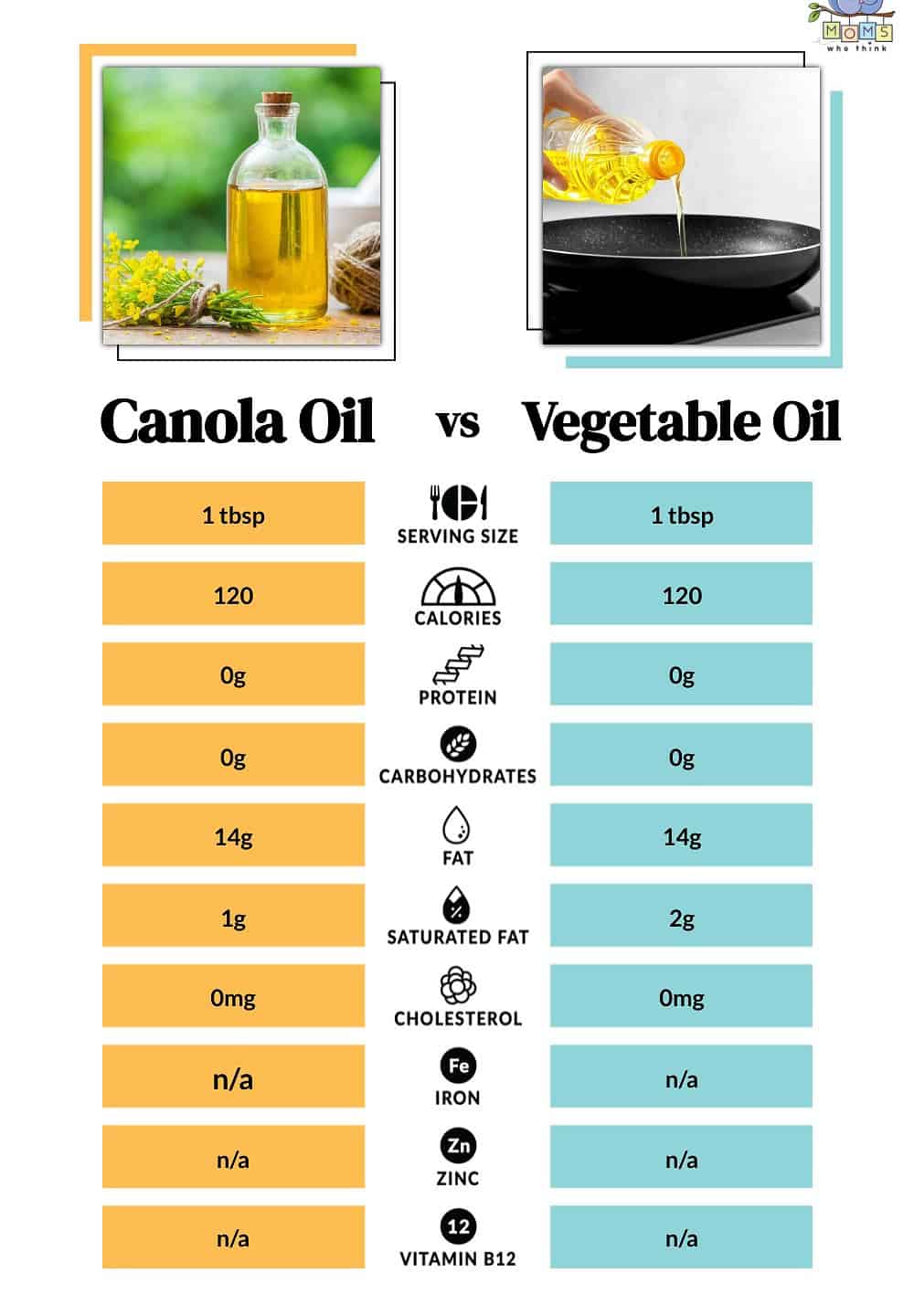
Storage of Canola Oil
Ample storage of canola oil prevents its quality and nutrient value from diminishing. This is why canola oil must be stored under cool and dry conditions. This is mostly because canola oil doesn’t exactly thrive under heated conditions with significant moisture content.
Cool and dry storage space also ensures that the shelf life of canola oil increases. When storing it at home, you can be sure that it won’t be part of your budget for a very long time. This saves you time and money to use in other ventures.
What To Look for When Buying Canola Oil
You are better off knowing that not all types of canola oil on the shelf are safe for consumption. You must have a guide within close range to know what to look for when shopping for canola oil.
For instance, ensure that the container lists all the nutritional benefits you’re set to reap when you try it. This means it should only contain lower levels of saturated fats. You must also ensure that the label says ‘Trans Fat-Free’ How else will you know what you’re signing up for?
Last but not least, check the expiry date to be sure you’re not buying products that have outlived their quality on the shelf. This could be detrimental to your health and overall well-being. Not to mention that it would affect your cooking negatively.
There’s nothing much you’d say or do to convince your toddler to finish their dinner. They can be quite tricky when their meals are not as palatable as they are used to.
What is Vegetable Oil?
Vegetable oil is a rather basic term for cooking oil. It is named so because its contents are derived exclusively from plants rather than animals. It serves as an umbrella for other kinds of oils that bear the name ‘vegetable oil’.
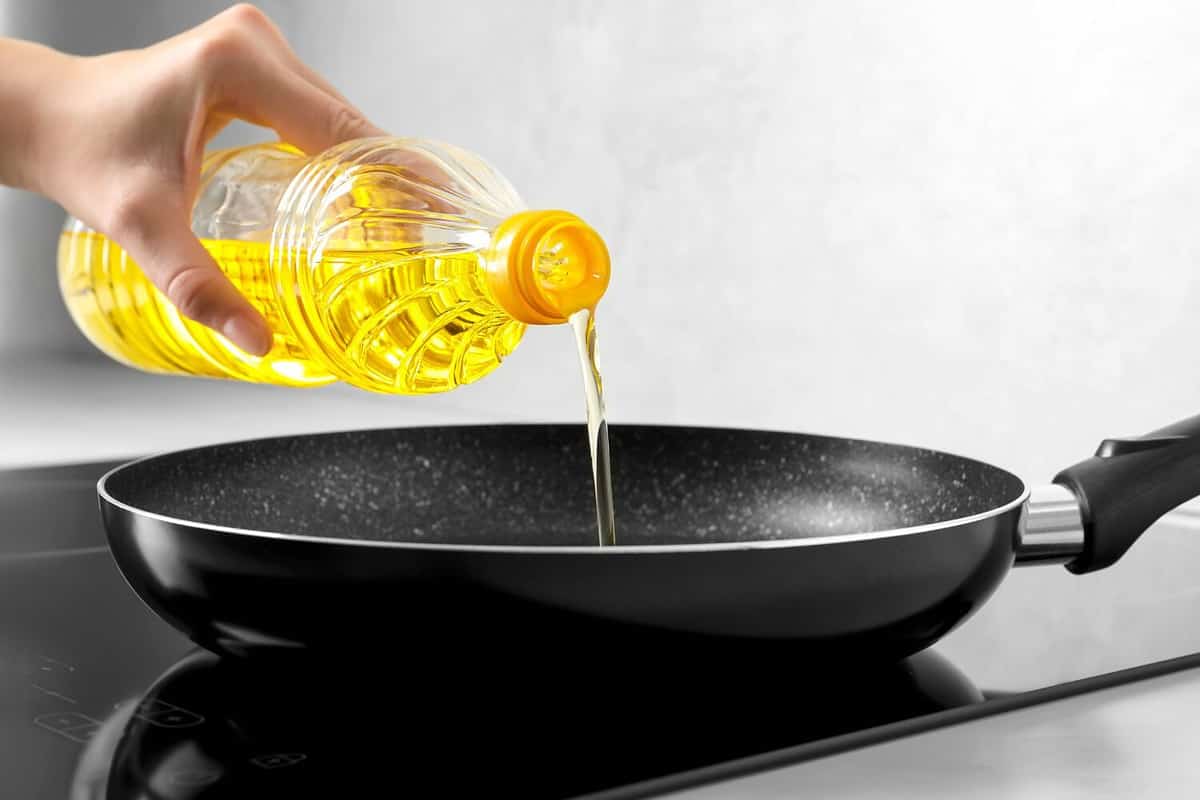
Both oils are highly nutritious, are easily available and are affordable.
©New Africa/Shutterstock.com
The plants in question from where the oils are derived are mostly soy and corn. In terms of appearance, you may have noticed that vegetable oil has no flavor and definitely no odor. Like all other oils, vegetable oil has to go through the required processes to ensure it comes out refined.
It’s made by sun-drying vegetables such as soybeans and then crushing them to squeeze out every drop of oil available. What follows next is the distillation process which is meant to remove all kinds of impurities as well as separate the oil from its original source.
Distillation also helps get rid of foreign flavors that may be regarded as contaminants. Vegetable oil is supposed to be pure, allowing for other processes and functions to set it. This comes in handy in other uses such as dressing salads.
Not everyone may be open to welcoming flavored salads with open arms. All the more reason for manufacturers to be keen during the distillation process as this is the defining moment for the vegetable oil.
History of Vegetable Oil
Vegetable oil has existed for years on end and is almost as old as time! It’s safe to say it was discovered almost at the same time as fire. While the early men went about their duty of hunting and gathering, plants were a huge part of their diet and they later discovered they can be cooked to enhance their flavor.
While at it, they also discovered that his newfound diet produced oil when heated. This timely discovery went through a series of processes before getting to the refined and pure vegetable oil we see and enjoy today.
Nowadays, we are free to enjoy and pick our desired oil from the wide selection available. This includes almonds, coconut, corn, and sunflower, among others. Each one displays its uniqueness when given a chance to shine in the kitchen.
Uses of Vegetable Oil
With its wide range of plant-based contents, vegetable oil definitely has multiple uses. These are scattered across the kitchen, and other areas of the home;
- Cooking: Obvious as it might be, we don’t mind tackling this part. Vegetable oil is a popular ingredient in most (if not all) recipes. It plays the roles of flavoring, shortening during baking, and dressing salads.
- Manufacture of toiletries: Soaps, perfumes, skincare products, and the like include a certain percentage of vegetable oil. It has a role in these products by ensuring your skin is well moisturized. Naturally dry skins stand to gain much from these products as they will be nourished using natural vegetable oils.
- Breathes life into old furniture: This works especially on wooden furniture. With time, they tend to look dry and dull and sometimes out of service. This is where vegetable oil comes in and saves the day when used properly. Sprinkle a few drops onto a rag then wipe it on the surface of the furniture. This gives your piece of furniture a fresh and new look.
- Storing tools effectively: The metal ends of shovels and hoes are susceptible to rust and other destructive elements. Vegetable oil helps in keeping the rust away. It can also be used as a lubricant in tools with moveable parts. Pour a drop or two to enable them to move and function smoothly.
Health Benefits of Vegetable Oil
Vegetable oil is definitely a must-have in your kitchen cabinet due to a number of benefits it has on your health. They include;
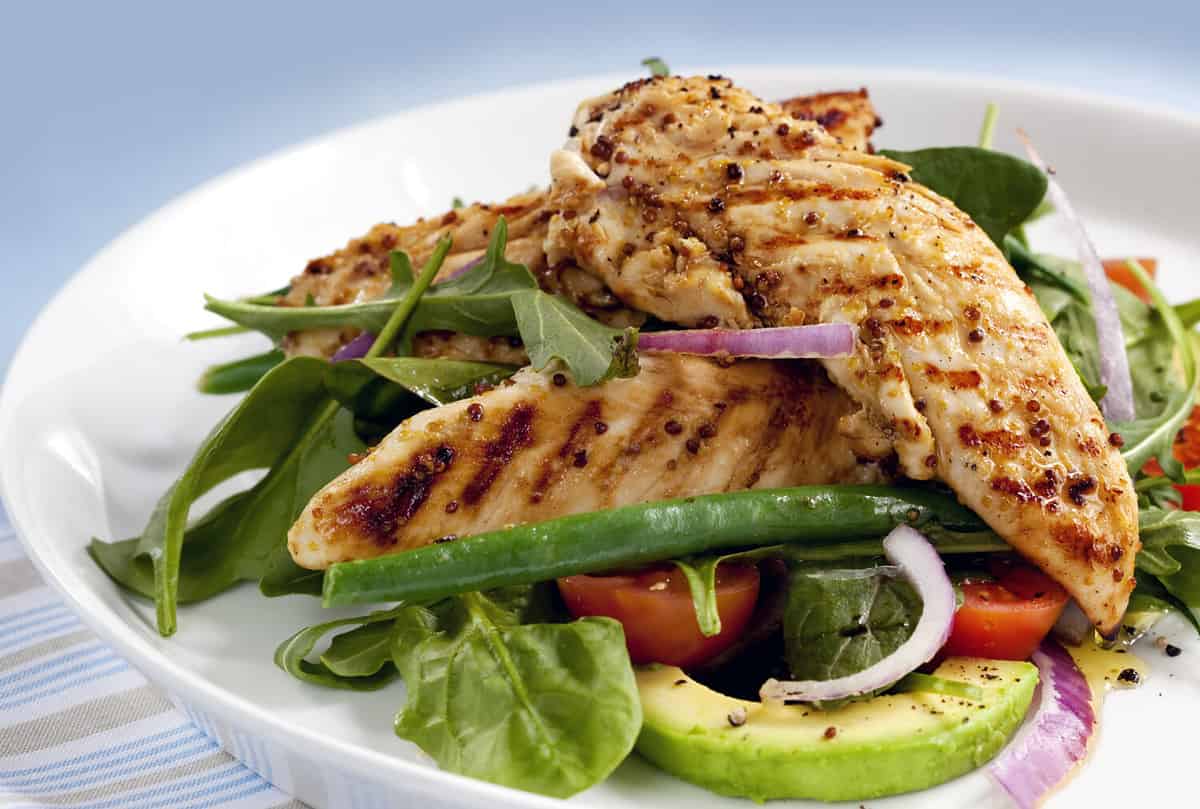
Healthy food cooked in vegetable and canola oils is good for your heart.
©60694/Shutterstock.com
- May reduce the risk of heart disease: Vegetable oil is enriched with cholesterol-free nutrients and vitamins. This ensures that your heart is in the right place in terms of general care.
- Boosts the immune system: Using vegetable oil in your cooking regularly assures you of a solid immune system that’s ready to fight off certain ailments that may threaten to invade your body.
- Promotes healthy growth: Vegetable oil is big on nurturing cells. This means it’s healthy, especially for growing kids, and supports excellent overall growth.
- Helps in lowering depression and anxiety: One of the oils used in vegetable oil is sesame oil, which helps in boosting the moods through release of hormones that trigger feelings of joy and excitement.
Can You Substitute Canola Oil For Vegetable Oil?
Why not? Both are oils enriched with all the nutrients and vitamins you need to stay healthy and strong. This means your cooking and recipes wouldn’t come to a halt simply because one of the two was unavailable.
Better still, you could substitute one for the other for reasons of feeling adventurous. This wouldn’t ruin anything or leave any regrets. Instead, you’d be embarking on a journey of new discoveries you’d wish you made earlier.
Are Canola Oil and Vegetable Oil the Same Thing?
They are both oils but definitely not the same thing. Canola is simply made primarily from the canola seed whose origin is Canada. Vegetable oil is a blend of so many oils wrapped into one neat package with a ribbon on top.
They both stand out in different ways in terms of different factors such as texture, color, nutrition elements, and so on. Being keen on these features helps you make wise decisions when shopping for cooking oils.
What are Substitutes for Canola Oil?
Failing to have canola oil in your kitchen for some reason doesn’t mean you have to call off the cooking. On the contrary, it’s an opportunity for you to discover other options that may be just as healthy and efficient.
Here are some suggestions;
- Vegetable Oil: The best part about it is that it’s neutral and can handle the highest level of heat you can throw at it. It’s a wonderful substitute due to its flexibility and versatility for home use.
- Grapeseed oil: You guessed right. These are seeds, therefore they’ve got to have some storage tank of oil in there somewhere, right? Right. Grapeseed oil is a worthy alternative because of its uniqueness.
- Sunflower oil: It’s best known for use as a salad dressing, something that canola oil would work perfectly on. Sunflower oil is also perfect when it comes to sauteing and frying.
- Olive oil: We wouldn’t wind up our list without this one. It’s one of the healthiest options you can ever come across. On a doctor’s special prescription? Olive oil will definitely carry you through it safely to the other side.
What are Substitutes for Vegetable Oil?
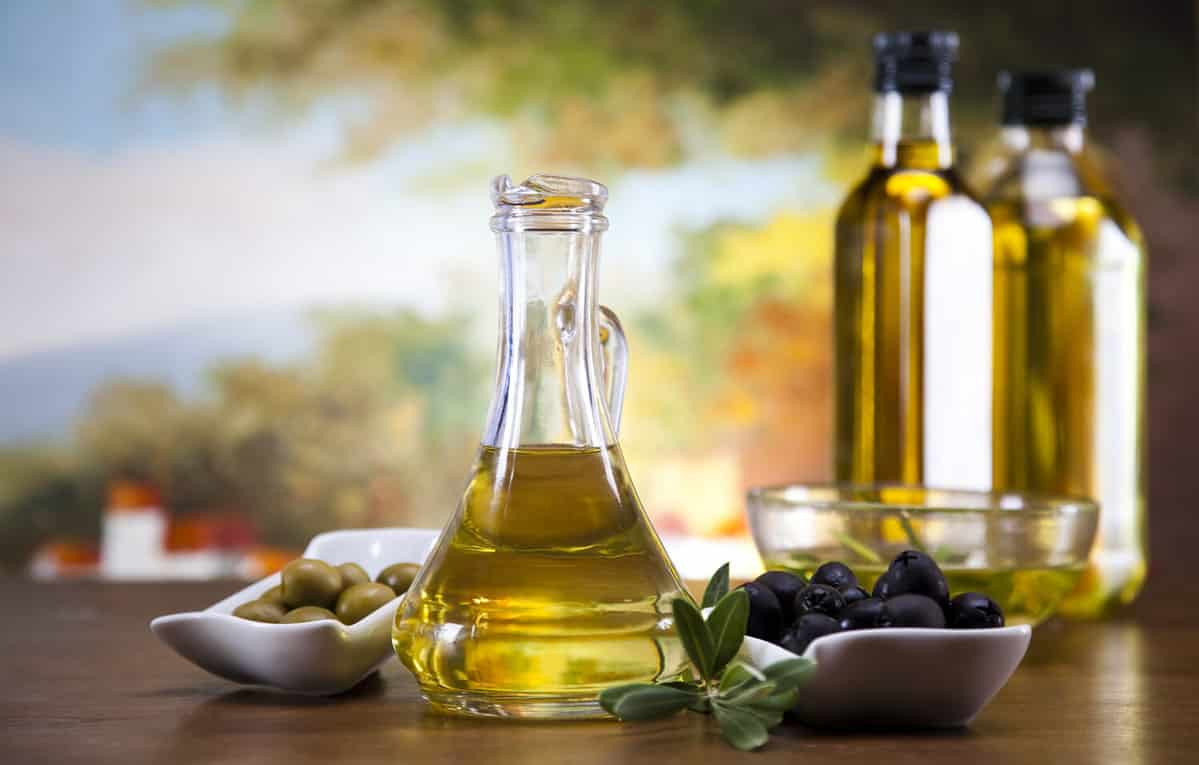
Though pricy, olive oil is an excellent alternative to both canola and vegetable oils.
©Sebastian Duda/Shutterstock.com
Be sure to have these around if your preferred vegetable oil is not available for some reason:
- Canola oil: Why not? It’s right there. Canola oil would make an excellent sub for vegetable oil any day.
- Coconut oil: It works in frying and baking just like vegetable oil and delivers perfect results within a short time.
- Olive oil: Once again, our trustee sidekick has made it to this round of substitutes. It plays a wonderful role in making dishes shine and look so sumptuous. It’s healthy to make it a part of your meals once or twice every while.
- Corn oil: It’s definitely plant-based, which is one of the reasons it would stand in for vegetable oil. Corn oil is also healthy and is considered a heart-friendly companion when making your dishes.
A Quick Comparison of Canola Oil vs. Vegetable Oil
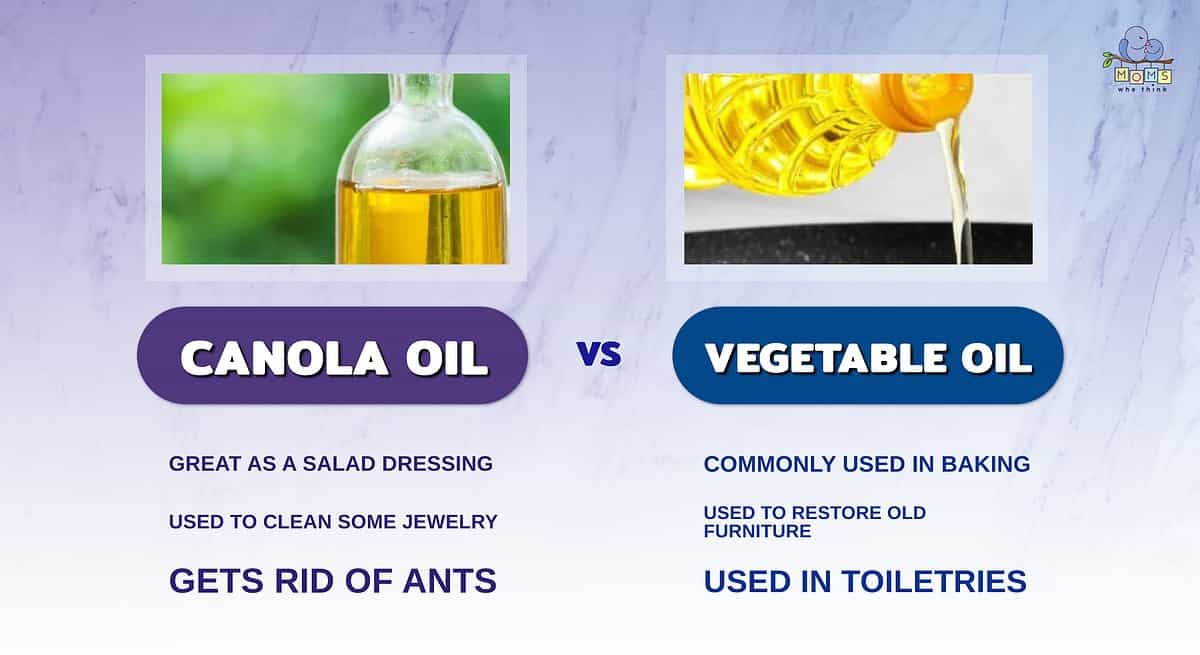
Canola oil and vegetable oil both have a range of unique uses. Canola oil can be used to clean jewelry and rid your home of pesky ants. Vegetable oil can be used to make homemade toiletries, or to restore old furniture. While both oils can be used in dressings, vegetable oil is more commonly used in baking. Both of these oils are great to have around your home; which one you choose will depend on your needs!
Print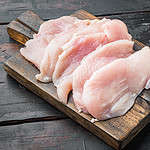
Cashew Chicken
Ingredients
- 4 boneless, skinless chicken breasts
- 1/2 cup flour
- 1/2 teaspoon black pepper
- 1 tablespoon canola oil
- 3 tablespoons honey
- 1/4 cup soy sauce
- 2 tablespoons rice wine vinegar
- 1 tablespoon brown sugar
- 1 garlic clove, minced
- 1/2 teaspoon grated ginger
- 1/4 teaspoon red pepper flakes
- 1/2 cup cashews, for serving
Instructions
- Combine flour and pepper in a large plastic bag, add chicken, and toss to coat.
- Heat oil in skillet over medium heat and brown chicken for 2 minutes on each side, set aside to cool.
- Meanwhile, whisk together honey, soy sauce, rice wine vinegar, brown sugar, garlic, ginger, and red pepper flakes; pour into gallon freezer bag.
- Add chicken to freezer bag, seal, and freeze.
- To prepare: thaw overnight in fridge. Empty bag into crockpot and cook on low for 3 to 4 hours.
- Dice chicken and stir in cashews. Serve over rice.
